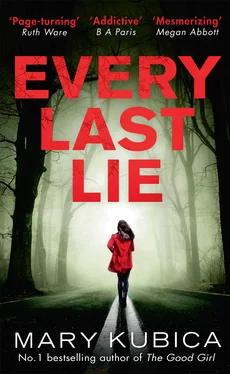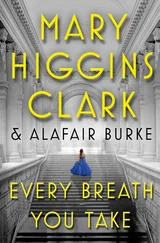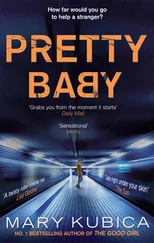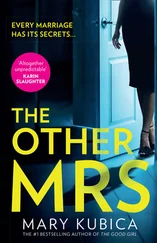Mary Kubica - Every Last Lie
Здесь есть возможность читать онлайн «Mary Kubica - Every Last Lie» — ознакомительный отрывок электронной книги совершенно бесплатно, а после прочтения отрывка купить полную версию. В некоторых случаях можно слушать аудио, скачать через торрент в формате fb2 и присутствует краткое содержание. Жанр: unrecognised, на английском языке. Описание произведения, (предисловие) а так же отзывы посетителей доступны на портале библиотеки ЛибКат.
- Название:Every Last Lie
- Автор:
- Жанр:
- Год:неизвестен
- ISBN:нет данных
- Рейтинг книги:5 / 5. Голосов: 1
-
Избранное:Добавить в избранное
- Отзывы:
-
Ваша оценка:
- 100
- 1
- 2
- 3
- 4
- 5
Every Last Lie: краткое содержание, описание и аннотация
Предлагаем к чтению аннотацию, описание, краткое содержание или предисловие (зависит от того, что написал сам автор книги «Every Last Lie»). Если вы не нашли необходимую информацию о книге — напишите в комментариях, мы постараемся отыскать её.
Every Last Lie — читать онлайн ознакомительный отрывок
Ниже представлен текст книги, разбитый по страницам. Система сохранения места последней прочитанной страницы, позволяет с удобством читать онлайн бесплатно книгу «Every Last Lie», без необходимости каждый раз заново искать на чём Вы остановились. Поставьте закладку, и сможете в любой момент перейти на страницу, на которой закончили чтение.
Интервал:
Закладка:
“What bad man, Maisie? What man? Tell me about the man,” I beg frenetically as I slide my arm from the spaghetti strap of a tank top and place Felix against my chest. It is not quite time for him to eat. By my count, Felix shouldn’t eat for another hour, and yet the pacifier is nowhere; there’s no other way to stop his screaming than to let him suck on me. As his gums latch down, my breasts begin to protest. The nipples are cracked, the skin dry, riddled with a bloody discharge; my breasts are hard and sore and unimaginably clogged. Like water held back by a beaver dam, the milk refuses to flow at the same pace Felix would like—a trickle rather than a surge, and so he slurps and slurps to little avail, making my chest crack and bleed. How has the nursing been going? Dr. Paul had asked in the exam room, and I’d lied, Just fine, before telling her the truth: the pain, the broken skin, the low milk supply. What I expected was a haranguing on breastfeeding, but what I was given instead was a way out. There are other ways, she told me before listing them for me: infant formula, a breast pump, donor milk.
Maisie won’t tell me about the man, and I want to tell her that she’s wrong, because I’ve spoken to the police and I’ve read the newspaper articles. I’ve been at the scene. They all seem to corroborate the same truth, that Nick’s speeding was the cause of the crash.
“Tell me about the man,” I say again, and when she won’t, I ask Maisie to tell me about the car. She’s told me already that the man was in a car, and I picture him racing after Nick on Harvey Road. “Was it a red car?” I suggest when Maisie says nothing. She shakes her head negligibly; it was not a red car. “Was it blue?” I ask, to which she replies with another shake of the head. “Was it a black car, Maisie?” I ask this time. “Was the car black?”
This time she doesn’t shake her head. Her response instead is a long drawn-out cry, a wolf howling at the moon, as she runs from the bed and from the room, calling over and over again for Daddy. She flees the bedroom in search of some other room where she can hide, the bathroom door still removed from its place and lying on the wooden floorboards, which I trip over in an attempt to catch my four-year-old daughter before the click of a lock bisects Maisie and me. In my arms Felix is no longer pressed to my chest, but now trying to imbibe anything he can find: my nightshirt, his hand, my hair. With a handful of my hair in his mouth, he no longer has the ability to scream.
It was a black car. A man in a black car. If what Maisie says is true.
I drop to the floor before Nick’s office door and ask three times for Maisie to come out. “Please, come out.” On the other side of the wooden pane I hear her cry, and imagine Maisie’s tiny body splayed across Nick’s ikat rug, her tears getting absorbed by the weft threads, the frosty grays with the citron stripes. Or maybe she’s hurled herself over the arm of Nick’s club chair, hugging the tufted back, pretending that it’s Nick.
When she doesn’t come, I make my way out to the garage in search of a nail and a hammer.
I’m becoming an old pro at this.
NICK
BEFORE
Her name was Melinda Grey, and I should have known right away, when she walked into my office some six months ago, that she was a problem patient. We’d talked about them in dental school somewhere in between local anesthesia and oral pathology. Problem patients. You wouldn’t have known it to look at her, for her small size seemed to contradict the barracuda she was. She was a pleasant-looking woman, approaching middle age, with soft brown hair and benign eyes, the kind that made great contact when she talked.
Ms. Grey presented as a phobic patient. She blamed it on an extensive dental history complete with emergency everything—root canals, abscesses, a fractured tooth—and a habit of choosing dentists with a lousy bedside manner because they tended to be cheaper, their appointment openings more readily available than someone like me, who had a calendar full of patients, until I met Ms. Grey, at least, and then suddenly I had time in my day to spare.
Her dental insurance was lousy, which she admitted to me, another red flag. I should have ended our appointment there and had Stacy look into coverage before I did any work, but Ms. Grey was the last appointment of the day, an emergency walk-in, and she was in a great deal of pain. The tooth was decayed; that I could clearly see. It would most likely need to come out. I offered a root canal as an alternative to extraction—a root canal, which would cost her three grand or more with the crown—but she shook her head and said that was more than she could afford. The tooth was a molar anyway, and she didn’t care to save it. By comparison, an extraction wouldn’t surpass a couple hundred dollars at best, and, seeing as Ms. Grey had no plans for an implant and intended to leave a hole in the back of her mouth that no one would see, the procedure would be relatively cheap.
It was a simple extraction. The tooth was completely above the gum line and required only a local anesthetic. I used nitrous oxide to help calm Ms. Grey’s rattled nerves. I lifted and pulled the tooth with my elevator and forceps; I packed the wound. I sent her home with pain relievers, though I made the decision not to prescribe antibiotics because, in my professional opinion, they were overprescribed, a problem that led to antibiotic resistance and a whole host of other bad things. I was strictly opposed to the use of blanket antibiotics. Ms. Grey was forty years old and completely healthy. She didn’t need antibiotics. Still, as always, I told her to keep an eye out for signs of infection: puss or other discharge, the formation of an abscess, fever or excessive pain. I said it out loud, maintaining eye contact so I was sure she heard. “There’s always some degree of pain following a tooth extraction,” I remember saying, perched there beside Melinda Grey on my burgundy stool, unpinning the bib clip from around her neck, wiping the last of the bloody saliva from her lip with a napkin. “What you want to keep an eye out for is excessive pain. Severe pain or swelling in two or three days from now. If you feel like something’s not quite right or if you have any questions—any at all—please, don’t hesitate to call.” And she nodded her head as if she heard.
I told the hygienist to make sure Ms. Grey had my business card before she left, one that listed the office number as well as my cell phone, which I always gave out so that I could be available to my patients twenty-four hours a day. It seemed like the ethical thing to do. I never wanted my patients to feel they were lacking for care. I also told my hygienist to schedule a follow-up appointment for Ms. Grey in one week, so I could be sure the wound was healing as it should be.
Ms. Grey never called. She never returned for her follow-up appointment.
What I failed to realize was that one of my hygienists was out for the day, home sick with a strep throat infection that had already blitzed half our staff, and the other was up to her neck in patients, taking on the workload of two. In the middle of all that chaos she had apparently forgotten to have Ms. Grey give informed consent, signing a simple form that indicated she knew the risks associated with the procedure.
I also didn’t realize it was the beginning of the end for me.
CLARA
A new air-conditioning unit costs upward of five thousand dollars, installed. To have the existing unit repaired—assuming repair is even possible—would cost in the vicinity of one hundred to nine hundred dollars, depending on what needs to be fixed.
“How old’s the unit?” asks the HVAC guy on the other end of my phone line, and I say that I don’t know. He walks me through a number of estimates before I thank him for his time and set the phone down, tallying up the prices in my mind, though not those for the air conditioner. Nick’s wooden casket cost two thousand dollars; embalming, which oddly enough wasn’t required by law, was an additional eight hundred. These are the figures I add up in my mind. The funeral home charged us for near everything, from the preparations of the body—combing through Nick’s blood-tinged hair, dressing him in his Sunday best, a refrigeration fee of fifty dollars a day and more—to a service fee for the funeral director, who was quickly making a killing off my loss. I sprang for the prayer cards, forty bucks for a hundred, with Nick’s handsome face printed on the front in black and white. I thought it looked classy, stately, but Nick’s mother said I should have used color; the black and white made them dated, she said; they made Nick look old, though Nick would never grow old.
Читать дальшеИнтервал:
Закладка:
Похожие книги на «Every Last Lie»
Представляем Вашему вниманию похожие книги на «Every Last Lie» списком для выбора. Мы отобрали схожую по названию и смыслу литературу в надежде предоставить читателям больше вариантов отыскать новые, интересные, ещё непрочитанные произведения.
Обсуждение, отзывы о книге «Every Last Lie» и просто собственные мнения читателей. Оставьте ваши комментарии, напишите, что Вы думаете о произведении, его смысле или главных героях. Укажите что конкретно понравилось, а что нет, и почему Вы так считаете.












